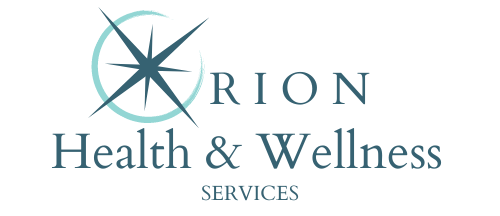Testosterone is often linked to muscle and sex drive, but it does much more. Total testosterone is the full amount of this hormone circulating in your bloodstream—both the kind that’s active and the kind that’s bound to proteins. Doctors use total testosterone tests to check for hormone issues, especially when symptoms like low energy, mood changes, or reduced libido appear.
Understanding your total testosterone level gives you a clearer view of your hormone health. It helps doctors decide whether low or high testosterone might be affecting your body. Whether you’re exploring testosterone replacement therapy (TRT) or simply checking your levels, total testosterone is one of the first things healthcare providers will measure.
Key Takeaways
- Total testosterone is the complete amount of testosterone in the blood, including both usable and bound forms of the hormone.
- This hormone plays a key role in muscle mass, mood balance, bone strength, and sexual health for men and women alike.
- Levels can be affected by age, lifestyle, medication, or certain medical conditions that impact hormone production and balance.
- Blood tests are used to measure total testosterone, often helping diagnose symptoms like fatigue, low libido, or unexplained weight gain.
- It’s important to understand both free and bound testosterone when discussing hormone health and possible testosterone replacement therapy (TRT).
Table of Contents
Total Testosterone: What It Is and Why It Matters
Total testosterone is a lab measurement used to understand the overall level of testosterone in your body. It includes both free testosterone and bound testosterone.
Free testosterone is the part that moves through your bloodstream and can be used right away by your body. Bound testosterone is attached to proteins, like sex hormone-binding globulin (SHBG) and albumin, and isn’t immediately available for use.
Even though only a small percentage is free and active, your body relies on the total pool. Doctors use total testosterone as a key marker for diagnosing hormone-related problems. For men, low levels may mean low testosterone or hypogonadism. For women, unusually high levels might point to conditions like polycystic ovary syndrome (PCOS).
Why Total Testosterone Matters
This hormone plays a big role in both men’s and women’s health. In men, testosterone helps maintain muscle mass, bone density, energy levels, mood, and sex drive. In women, it supports fertility, bone health, and libido, even though they naturally have much lower levels than men.
Total testosterone is usually tested through a simple blood draw. The test is most accurate when done early in the morning, when testosterone is typically at its peak. Labs report results in nanograms per deciliter (ng/dL), and the ideal range varies based on age, sex, and lab standards.
Normal Ranges and Variations
For adult men, the typical total testosterone range is around 300–1,000 ng/dL. Levels below 300 may signal testosterone deficiency, especially if symptoms are present. For adult women, normal levels are much lower—usually between 15 and 70 ng/dL.
Levels can shift due to stress, sleep, weight, medications, or underlying health problems. A single test may not give the full picture. Doctors often repeat testing and pair it with symptoms before making any diagnosis or treatment plan.
How It’s Different from Free Testosterone
Some people ask, “Why test total testosterone and not just free testosterone?” The answer is that total testosterone gives a more complete view. Free testosterone alone may miss key insights if a large amount of testosterone is bound to proteins.
Testing both total and free testosterone can give your doctor the best view of your hormone health. For most people, total testosterone is the first and most important step.
What Affects Total Testosterone Levels?
Many things can change your total testosterone levels. Your age, lifestyle, medical history, and even sleep habits all matter. Hormone levels naturally decline with age, especially in men. Starting in the late 30s, men may see a slow drop in testosterone each year.
Common Causes of Low Testosterone
Low total testosterone, or “low T,” can be caused by a range of issues. These include:
- Chronic illness: Conditions like diabetes, kidney disease, and obesity can lower levels.
- Injury or infection: Damage to the testes or pituitary gland can reduce testosterone production.
- Medications: Opioids, steroids, and some cancer treatments may affect hormone levels.
- Stress and poor sleep: Both can disrupt hormone production over time.
Symptoms of low testosterone can include fatigue, low sex drive, mood swings, trouble concentrating, and reduced muscle strength. If you have several of these symptoms, testing total testosterone is a logical first step.
Causes of High Testosterone
While not as common, high testosterone levels can also cause problems. In men, this might happen due to overuse of anabolic steroids or testosterone replacement therapy.
In women, high testosterone can be a sign of PCOS, adrenal issues, or hormone imbalances. Signs of high testosterone include acne, hair thinning, and changes in body hair. In women, it may also cause irregular periods or deeper voice changes.
Total Testosterone and Testosterone Replacement Therapy
If your total testosterone is low and symptoms are present, your doctor might suggest testosterone replacement therapy (TRT). TRT is used to restore testosterone to a healthy range and improve symptoms like low energy and sex drive.
Before starting TRT, doctors will often order more than one testosterone test to confirm the diagnosis. They may also check related hormones like luteinizing hormone (LH) and follicle-stimulating hormone (FSH). Regular follow-up testing is needed during TRT to monitor your total testosterone level and make sure treatment is working safely.
How to Support Healthy Testosterone Levels
You can help support healthy total testosterone levels naturally. Try the following habits:
- Get regular sleep (7–9 hours per night)
- Exercise, especially strength training
- Maintain a healthy weight
- Eat a balanced diet with healthy fats and proteins
- Manage stress with mindfulness or breathing exercises
These habits support your body’s natural hormone production and may help improve total testosterone levels over time.
Take Control of Your Hormone Balance
Frequently Asked Questions
It measures both free and bound testosterone levels in the bloodstream.
It helps diagnose hormone imbalances and guides treatment decisions like testosterone replacement therapy.
Total includes both usable and protein-bound testosterone; free is only the active form.
Test early in the morning, usually between 7 and 10 a.m., when levels are highest.
For men, 300–1,000 ng/dL; for women, 15–70 ng/dL.
Yes, chronic stress can lower testosterone over time.
Through a simple blood test, often ordered by a primary care provider or hormone specialist.
Age, illness, obesity, medications, and poor sleep can all contribute.
Yes, when monitored by a healthcare provider and used appropriately.
Yes, high levels in women can signal hormonal imbalances like PCOS.

